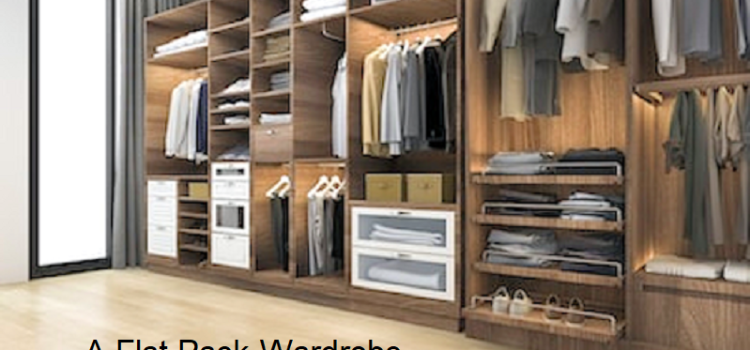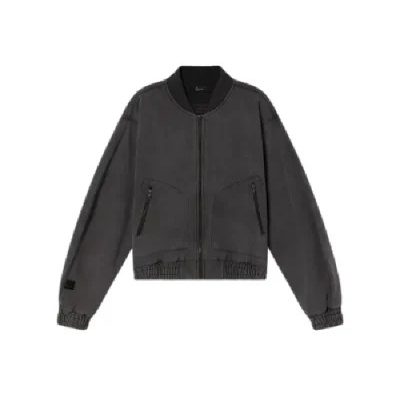
Flat-pack wardrobes are good for modern homes. They can transform empty spaces into organised havens. These designs solve storage headaches without breaking the bank. They slip through narrow hallways and tight staircases with ease. There is no more struggling with bulky and pre-assembled furniture that never seems to fit.
You can find that shipping becomes easier with compact packaging. The delivery costs drop, and you save time and effort. However, know that not all flat-pack wardrobes are created equal. Some look like stores or displays but fall apart at home.
Picking the right wardrobe is important. A wrong choice means wobbly frames that shake with every movement. Imagine hanging clothes and watching your new wardrobe wobble nervously.
These wardrobes offer flexibility for every home style and space. Your home deserves more than just another piece of furniture. You need one that looks good and is durable.
In this blog, you can learn about some important things to look for while buying a flat pack wardrobe. This will save you time and effort for a long time. Be clever to choose the best within your budget.
Things to Check Before Purchasing a Flat Pack Wardrobe
1. Look at Board Thickness and Material
The board thickness is important when shopping for a flat-pack wardrobe. You don’t want to buy a piece of furniture that starts wobbling after a few months. You can go for a board thickness of between 15-18mm, typically using MDF or chipboard materials.
Thin boards might look sleek in the store, but they’re trouble waiting to happen. They’ll bend under the weight of your clothes, and this creates unsightly curves and potential cracks.
Solid wood wardrobes are good storage solutions but come with a higher price tag and promise years of reliable use. You’re investing in durability that cheap materials can’t match. This supports your clothing collection through multiple home moves.
MDF and chipboard are budget-friendly and can look surprisingly good when finished well. Modern manufacturing techniques mean these materials aren’t just cheap – they can be quite strong. You can avoid the thinnest options that feel flimsy to the touch.
Heavier boards typically have better quality. You can give potential wardrobes a gentle push in the store. Does it feel solid? That’s your first clue to its potential longevity.
2. Pick The Right Type of Back Panel
Choosing the right back panel can turn a wobbly wardrobe into a rock-solid storage champion. The full and thick back panels are needed for stable wardrobes. You should avoid thin or soft back panels. They’re the weak link that can make your entire wardrobe feel like it’s about to collapse.
Screws matter more than you might think. Tacked-on panels are a quick fix that rarely stands the test of time. You can look for panels firmly screwed into the frame. It creates a solid connection that prevents shifting and wobbling.
.A strong back panel protects your wardrobe from unexpected bumps and moves. It keeps everything aligned and prevents those annoying moments when doors start to misalign, or shelves feel slightly off-kilter.
Some manufacturers cut corners with flimsy backing, and I hope you won’t notice. But you can spot the difference. You can run your hand along the back – does it feel solid? Press gently, and does it resist movement? These simple tests reveal a lot.
Professional tip: Check how the back panel connects to the frame. Clean, precise connections suggest careful manufacturing. Messy joints or loose fittings are red flags you shouldn’t ignore.
3. Study The Build Manual Before Buying
The manual sheets tell you a lot about what you’re bringing home. Some manuals look like puzzles, while others guide you properly.
You can also go for visual guides. You can look for clear and step-by-step illustrations. This helps you assemble complicated diagrams with ease.
Checking the manual before buying is like test-driving a car. You want to see how smoothly things will come together. The tagged parts are a lifesaver – they mean less guesswork during setup. The untagged pieces turn the assembly into a frustrating treasure hunt.
Before heading to the store, download and review the manual. This lets you peek into the assembly process without leaving your sofa. Some brands make full manuals available, showing they’re proud of their design.
A well-designed manual suggests a well-designed product. It shows the manufacturer cares about your experience. Some brands go the extra mile, including online video guides or customer support lines.
4 Check for Return Terms On DIY Furniture
Retailers often have complex rules that catch buyers off guard. Restock fees lurk in the fine print of many furniture contracts. Some shops charge hefty amounts for opened boxes, turning a simple return into an expensive mistake. A 20% restock fee can quickly eat into your budget, transforming a seemingly good deal into a costly error.
Some retailers offer generous windows for returns, while others are surprisingly strict. You can check the exact number of days you have to decide. Fourteen days might sound like plenty, but assembly and careful inspection take time.
Shipping costs can become a nasty shock for unprepared buyers. Who bears the expense of sending back a large wardrobe? Some retailers expect customers to cover return shipping, which can run into significant pounds.
You can keep all original materials intact and avoid full assembly. Retailers often reject returns for items completely put together or with damaged packaging.
Online purchases come with additional complexity. You can read return policies and screenshot important details, and keep all communication records.
How Can You Get Money to Buy the Best One?
There are many ways to fund your furniture. Personal loans can bridge the gap between want and wallet. There are high-street banks that offer competitive rates for home improvements. Some lenders specialise in smaller purchases. This makes wardrobe shopping easier. They understand your need for quality furniture.
People on benefits have options, too. They get access to special support schemes. Some local councils offer grants for home essentials. These programs help those with tight budgets upgrade their living spaces. They can also get loans like payday loans for people on benefits by showing proof of income and credit scores to lenders. They can get very good terms with excellent credit scores.
You can ask your family and friends who might offer interest-free loans. Borrowing from loved ones can be a kind option. You just make sure to set clear repayment terms.
Conclusion
Your journey to the perfect wardrobe ends here. Flat-pack furniture isn’t just about saving money; it’s about smart shopping. The small details you’ve checked can save you massive headaches.
Every careful check is like an insurance policy for your home. You’re not just buying furniture; you’re investing in peace of mind. Those moments were spent examining manuals and materials pay-offs.
Smooth assembly can cause less stress in your busy life. There will be no more wrestling with unclear instructions or flimsy materials. Your carefully chosen wardrobe becomes more than storage.
You’ve taken the time to understand what matters. Your wardrobe will handle your clothes, your moves, and your changing life with ease. A great flat-pack wardrobe is within your reach. You’re not just buying furniture – you’re creating a solution that works perfectly for your home.










